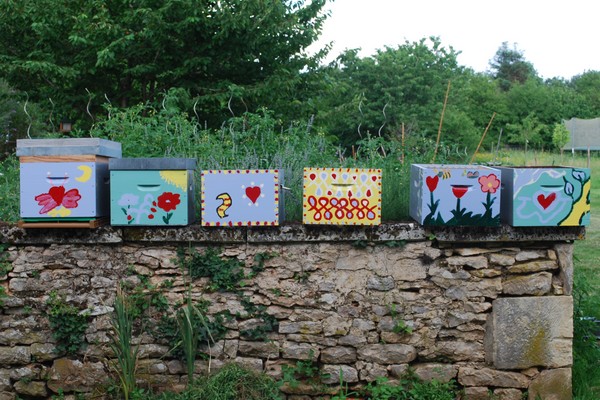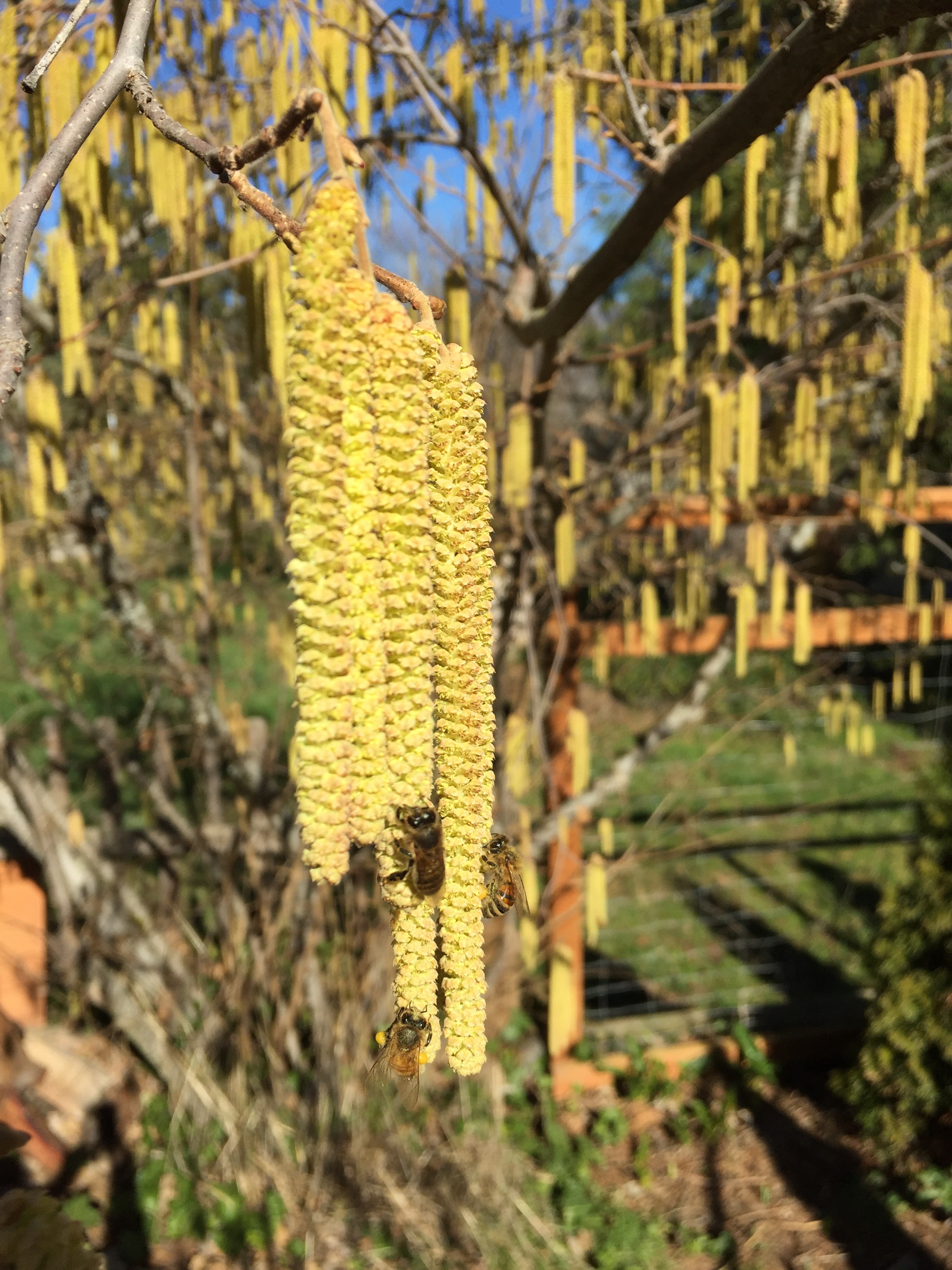In our area, February brings increasingly warm weather and signals the end of the quiescent time in the bees’ yearly cycle.
If you need new bees, NOW is the time to order. Locally grown NUCs are your best option. Andrew Watson at Applegate Apiaries and John Jacob at Old Sol Bees are two good sources for bees.
It is also time to make sure that your equipment is purchased or repaired and ready for spring. Shastina Millworks is a local company that makes bee hives. The Grange now carries 8 frame equipment and beekeeping tools. Paint a different graphic on each hive to help the bees locate their own hive.

Painting designs on hives can help bees find their hives. And it’s fun!
Take a beekeeping class. The SOBA Beginning Beekeeper Class is a chance to learn beekeeping and meet area beekeepers.
Colonies can starve in late winter and early spring just before flowers bloom. If the weather is above 55 degrees, you can open the hive quickly to move honey frames closer to the cluster. Bees can starve even if there is plenty of honey in the hive if the honey is too far away from the cluster. If the hive is no longer heavy, you can feed drivert sugar on the inner cover as described in February. Alternatively, you can replace empty frames with full frames of honey stored in the fall for this purpose. Do not use syrup until the daily high temperature is above 55 degrees.
If you are trying to build up hives for maximum honey production, you can also feed pollen substitute. However, you are encouraging brood production which will put further strain on diminished winter food supplies. It may be better to wait for the first part of March when the weather may be warmer and drier.
If you have wrapped the hive for the winter, and provided a super filled with insulation as described in the November post, you can remove both once the weather is well above freezing at night.
In good weather, the bees can begin to bring nectar and pollen to the hive from early blooms. Strong, successful hives may begin to think about swarming late in the month. Pick a nice sunny day to perform a thorough inspection for eggs, brood pattern, disease, and stores.
Also be sure to check out the Beekeeping Tips for February and March on the ORSBA site.

